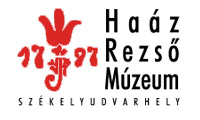Kovács Petronella (szerk.): Isis - Erdélyi magyar restaurátor füzetek 8-9. (Székelyudvarhely, 2009)
Puskás Éva: A Szatmári Római Katolikus Egyhámegye kulturális javaainak megmentése
At every published metal thread type, an attempt is made for the reconstruction of the manufacturing technique of the thread on the base of the data given by the contemporary written sources and the results of scientific analyses. Simple illustrations help the understanding of the subsequent working phases. At the various versions, a short description is given of the studied ornaments or the ones published in the special literature with the earliest and the latest dating - if such are known to the author. Next, the possibilities of the simple identification of the threads of the main groups (like gilded copper, silver-coated copper, etc.) are described, irrespective of the production technology (for example how the copper was gilded or coated with silver). The published optical microscopic and classical micro-chemical methods are generally not suitable for the determination of the exact layer structure of the different versions and, in the case of alloys, of the quality and the quantity of the components. Nevertheless, they can be used for the identification of the type and the main components of the threads and the detection of the layer structure, if any. A detailed description has already been published on the morphological and material investigation methods of the metal threads which can easily be carried out in a conservation workshop, so the author discusses here only the main characteristics of the copper-based metal threads that can be studied under an optical microscope and the micro-chemical tests that are necessary for their identification Dr. Márta Járó Chemist Department of Conservation Training and Research Hungarian National Museum Budapest Phone: +36-1-210-1330/175 E-mail: jarom@freemail.com Cornelia Bordaşiu Case-specific interventions during conservation Icons preserved from the frieze of the Feasts series of the iconostasis of the Bistriţa monastery The study describes the conservation of the panel paintings “Holy Shroud” (or “Veronica’s kerchief’) and “Christ’s flagellation” from the series of six icons depicting Christ’s suffering. The support of the frieze is an about 5 cm thick and 34 cm broad linden board. The original length cannot be determined. The board was cut by a machine and then worked with hand: chiselling traces can be seen on the backside. The places of the four-lobcd icons were carved deeper than the surface of the carved ornamental frame. The surfaces of the icons were slightly raised in the centre, and they were framed with a ribbon ornament twisted in a baroque style. Openwork decoration can be seen in the spaces that separated the icons. The grain direction of the wooden support was horizontal both on the carved ornament and the icons. The carved surfaces were gilded and silver-coated. X-ray analyses revealed that egg tempera was used for the painting of the icons. There are two layers of gesso on the wood overlain by a red bolus ground. Traces of polishing can be observed on the metal foil, on which an uneven protective layer of shellac was applied with a brush. The painting style of the icons is lighter than that of the traditional icons painted in a Byzantine manner. The painter used much binding matter at the pastel colours, which gave a surface as smooth as glass lending the picture the visual impression of an oil painting. Cracks and warping developed on the support in the local microclimate, the stretchers shifted and the glued surfaces got detached. The wood lost its resistance in result of deterioration by insects and fungi. Large areas were missing from the openwork ornament and the lower part of the frieze. Beside environmental hazards, the dome of the altar fell on top of the iconostasis during an earthquake in 1977 leaving only a few fragments of the two friezes of the icons of the Feasts. Former inappropriate treatments also caused injuries to the object. The backside of the support was treated with oil paint against deterioration by insects, which hindered the emission of the moisture that the wood had absorbed from the air and created an excellent medium for wood deteriorating insects and fungi. They nearly completely consumed the wood: the support became spongy. The fissures between the support and the ornamental elements were filled in with a glue-rich sealant, which exercised a stretching effect on the brittle wood. The putty was smeared over the original paint layers as well, and the completions were aesthetically inadequate. The canvas used at the priming could be observed along the injuries on the ornamental frame of the icon titled the “Holy Shroud”. It was probably used because of the fissures that had already been present in the original wood. During the conservation, the structure was first reinforced and then the missing elements were reconstructed from the preserved ones. The detached parts of the support were fixed together with tenons. The tenons were glued into the support with 70 % bone glue. The missing stretcher was replaced with appropriately treated linden. Both the support and the new stretcher were consolidated with impregnation. The large missing area on the lower part of the frieze was filled in with cradle method in the following way: first a row of bamboo sticks were stuck into the middle of the rim of the support to show the direction. The sticks were glued to the support with animal glue and they were also secured to one another. After drying, the cradling was continued with small, treated linden laths cut to the right measurements, which were laid perpendicular at each other on both sides of the bamboo stick row. The laths were impregnated with a hot gluey solution and they were embedded in putty for the sake of a stronger attachment. This procedure was carried out step 187
